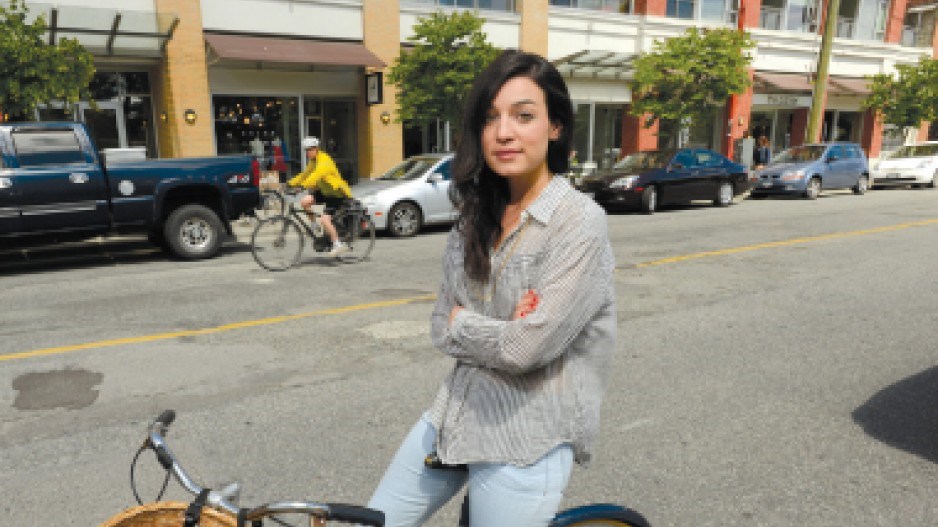Small-business owners along an up-and-coming Chinatown street are bracing themselves for the loss of on-street parking when the area's much-publicized bike lanes are built – and a business operator on Hornby Street who has been through it says they're right to expect some short-term pain.
The City of Vancouver will install a separated bike lane on part of Union Street between Main and Gore, resulting in the loss of on-street parking on the north side of the street. The city says the changes, part of an Adanac Bikeway upgrade, are needed to make the popular bike route safer.
But the bike lane plan raises a host of area business concerns.
"They're reducing access to a neighbourhood that's already pretty hard to access, given the viaduct's on one side of the street and you can't really loop around," Kleah Michnik, owner of clothing shop Charlie and Lee, told Business in Vancouver.
Two-and-a-half years ago, businesses in downtown Vancouver had many of the same concerns when a separated bike lane was installed on the east side of Hornby Street.
"On the one hand it's laudable, and on the other hand it's tough on business," said Mike Robinson, executive director of Hornby Street's Bill Reid Gallery of Northwest Coast Art, of the push to improve bike infrastructure throughout the city.
While the loss of metered parking likely forced visitors into more expensive area parkades, Robinson said his organization also had to work with the city to find another location where tour buses could drop off tourists and school groups. Still, Robinson said the change did not affect gallery attendance, which continues to grow by around 1,000 people annually. This year, he expects 17,000 visitors. Robinson recommends businesses do everything they can to get the word out to customers before they arrive.
"Use your website and social media to advise customers where to park," said Robinson, "and how to gain access if they're biking or walking."
But Michnik said she and other business owners on Union Street are still hoping they can convince the city to look at other options.
"Our customers come to us in a mix of ways," she said, pointing out that she chose her store's location because Union is on a bike route. "During the winter there are a lot more people driving."
Steve Da Cruz, owner of upscale vegetarian restaurant the Parker, said his business is heavily dependent on customers being able to drive and park. He's concerned his clientele will now "get lost in the maze of Chinatown."
Michnik and Da Cruz are also concerned that the bike lane is proceeding when the city is considering demolishing the nearby Georgia and Dunsmuir viaducts, which will create more traffic uncertainty in the neighbourhood. Vancouver released a staff report June 20 recommending a two-year study of the viaducts' removal.
A business-impact report conducted by Stantec Consulting eight months after the Hornby bike lanes were installed showed that businesses along the bike route lost between 6% and 9% of sales because of the parking change and access problems.
By comparison, the introduction of the HST around the same time and the new tax's impact on parking rates caused sales to drop between 9% and 11%.
The Downtown Vancouver Business Improvement Association (DVBIA) was one of the groups that pushed for the study. The report called the effect on the businesses "moderate." But DVBIA executive director Charles Gauthier noted that for small businesses in tough economic times, every customer counts.
Gauthier expects to see Hornby Street change because of the bike lane. "We'll see retailers who come in, who have a better understanding of how their customers get to them, and they'll probably thrive in this location." •




